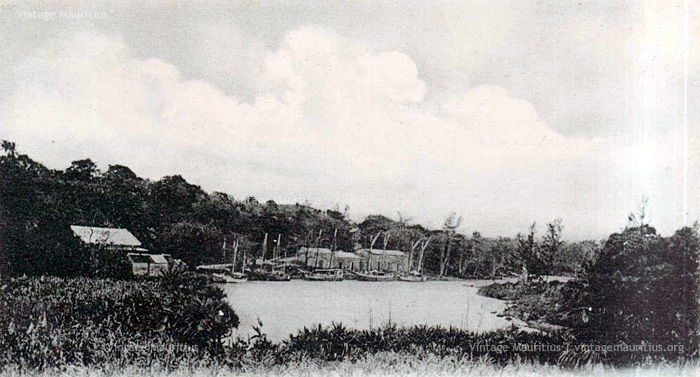
Souillac Bay – Le Batelage – 1910s
When we turn back time, the Bay of Souillac, from the french governor Viscount Francois de Souillac (1779 – 1787) was meant as a Port for vessels to easily load sugar cane and carry to Port Louis. In 1779, Francois de Souillac gave instructions to dredge the estuary of the river for its conversion into a boat lighterage. However, access to the port still remained difficult.
For many years, boats known as “cotiers” took sugar produced in the south area to Port Louis harbour. The District Magistrate ‘Autard de Bragard’ in 1856 improved communications around Port Souillac.
The Viscount Francois de Souillac was initially the governor of Ile Bourbon (now La Reunion) since 3 years when he was nominated for the government of Ile de France (now Mauritius). De Souillac was a very courteous man and his simplicity and administration made him gain the heart of his neighborhood. During his governance, M. de Souillac was very much oriented towards preservation and security. Due to the hazards of fire outage, he insisted that precautions and preparations were established that all necessities were readily available to fight any such occurrences. Pumps, ladders, hose, ropes etc were made available at different parts of the town of Port Louis.
The construction of ‘La Chaussée‘ and the completion of the Saint Louis Cathedral was among his deeds, at least his participation. To provide the town with water supply he also constructed the water canal at ‘Chateau D’Eau’ (Le Doguet) at the foot of ‘Le Pouce’ mountain. The water, through hidden under earth passages arrived at the Obelisque still visible in front of the St Louis Cathedral. Today these passages can still be seen at Le Doguet but it no longer supplies the fountain at the Cathedral.
History also tells us that, at this time, two very rare things happened. On the 5th of June 1785, a cyclone suddenly occurred and lasted 24 hours straight, and on the 4th of August 1786, a light earthquake was felt and caused some serious landslides.
This Port at the Bay of Souillac is today known as ‘Le Batelage’ and the gallery below shows its current remains and activity. The buildings have now been converted into a tourist restaurant, well, at least it is being preserved as such.









